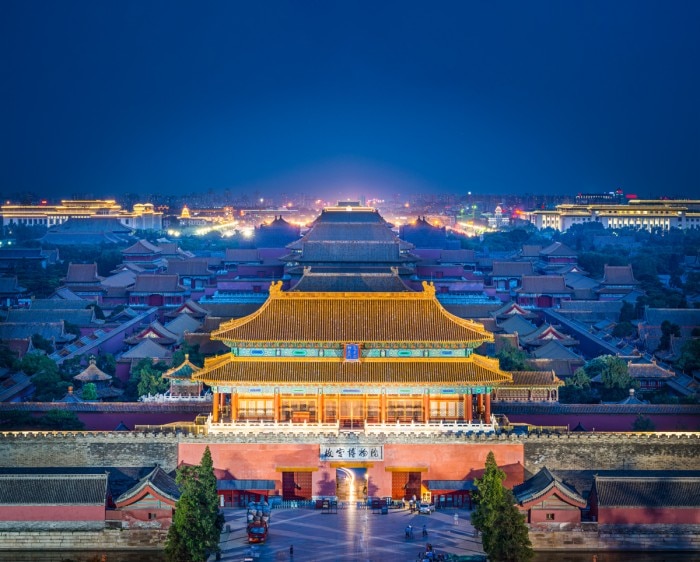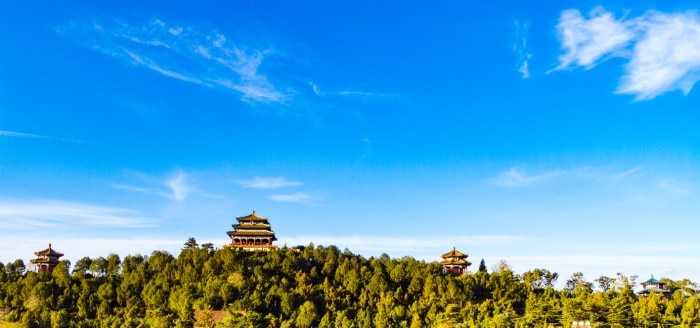
Beautiful Old Beijing
Explore Life Science
- Off the Bench
- Exploring Life
Glistening highrises and narrow hutongs and courtyards – China’s capital city Beijing combines opposites. There can be no modern age without the past: a stroll through the Beijing of the dynasties.
In the “Hall of Supreme Harmony”, admiring the Dragon Throne, visitors can imagine past celebrations of coronations, baptisms and birthdays. Gardens and the Summer Palace evoke the lives of empresses and concubines. In the “Hall of Mental Cultivation”, you may ask yourself what it must have been like for past emperors, living in the Forbidden City. This hall was where the sovereign came to rest in solitude. What may have been the memories of China’s last emperor? At the age of two, Aisin Gioro Pu Yi ascended to the throne in 1908, and in the years to follow, all who came in contact with him, eunuchs, teachers, cooks and advisors, among them his father, had to perform the “kowtow” before him: worship him in humility, their foreheads repeatedly touching the ground.
Read more
Read less

The Forbidden City was declared a UNESCO World Heritage Site in 1987: it comprises close to 900 palaces and 9,000 rooms. It is considered the largest imperial construction in the world, and those who explore it will afterwards feel it in their feet. A break is welcome – preferably in Jingshan Park, which is made from the earth of the moat surrounding the Forbidden City and which is located on an elevation, directly across from the Northern gate. In historic times, the park served the court as a place of quiet; today, it is mostly the tourists who enjoy taking repose here. It is picturesque: the expansive green, feather-like cypresses, as well as pine trees, stretch towards the sky, and each of the five peaks of the park is adorned with a pavilion.
The most spectacular view across Beijing can be enjoyed from the “Pavilion of Everlasting Spring” (Wanchun ting). At 43 meters, it is the highest point of the capital, and if skies are clear, it offers an unimpeded view of the straight North-South axis – the backbone of ancient Beijing. All important buildings, such as the emperor’s palaces and temples, were dependent on this road. Directly surrounding Jingshan Park, however, the many hutongs spread out like a vast carpet, with alleys that are too narrow for cars or horse carriages. This was where the commoners lived, in open courtyards. They were forbidden to enter the emperor’s palace – hence the name, Forbidden City. Hidden away in one of these streets is the restaurant “Huangjia Bingjiao Xiaoyuan”.
It is known for simple but authentic Beijing cuisine, for example, baozi: yeast buns filled with vegetables or meat. In ancient times, the ice cellar of the Forbidden City was also found in this location; ice from the North Sea was used to keep the food for the palace cool. Today, visitors can still peek inside the several-meters-wide room which these days is used to chill wine. The restaurant may be a little hard to find, but it is worth the detour: when in Gongjian Hutong, look for a red varnished front door with brown doorknobs and decorative lampions.
Read more
Read less
The Olympic Park was built for the 2008 Summer Olympic Games, located approximately eight kilometers from the Forbidden City. The National Stadium, also known as the Bird’s Nest, host to the spectacular opening and closing ceremonies, as well as the National Aquatics Center with a façade reminiscent of soap bubbles, are among the most well-known buildings of this complex. The village is surrounded by a forest – instantly combining the visit to the former sports facility with an excursion into nature.
1 Guojiatiyuchang S Rd,Chao Yang Qu

Mutianyu is the name of the section of the Great Wall of China which is located roughly 70 kilometers from Beijing, and which is considered the most well-preserved. Situated amidst green mountains, it is adorned with battlements and watchtowers. There is an option of taking the gondola to the top and tobogganing back down into the valley. Alternatively, 4,000 steps await the visitor. The village of the same name, Mutianyu, is close by – an excellent destination with good restaurants.
Mutianyu Village,Huairou District

No visit to Beijing is complete without Peking Duck – at least if one is not limited to a plant-based diet. The city’s best Peking ducks are said to be served in the restaurant “DaDong Roast Duck”. The restaurant is named after its founder’s nickname Da Dong, and his roast duck is called “SuperLean”. This Peking duck restaurant is so famous that even Patricia Schultz included it in her book “1,000 Places to See Before You Die”, a classic among travel guides, as a suggestion for one’s own personal bucket list.
Jinbao St. 88,Dongcheng

Across from Jingshan Park, at the northern end of the downtown axis, you will find the Drum Tower – another symbol of old Beijing. This mighty building, painted in oxblood red, was constructed during the early Ming Dynasty at the beginning of the 15th century. It speaks of how nearby, the city gates were closed for the night, as well as of slowly ticking clocks in historic China. In those days, bells and drums first and foremost served as ceremonial musical instruments; only later were they used to announce the time. They did not sound hourly, as is customary in the West, but every two hours – six times during the day, and six times during the night.
With this history, the drum and bell towers invite today’s visitors, surrounded by the bustling city of Beijing, to rediscover the slowness of the past for themselves – and perhaps adapt a more leisurely pace when exploring the square near the towers: a place which, in historic times, served as a marketplace for herbs, and where today people practice tai chi. In Wudaoying Hutong, a hip street not far from Confucius Temple, modern China meets its ancient counterpart. One Western café follows another; you can find a Mexican and a Greek restaurant, right next to shops which sell traditional artisan pieces – for example, handmade cat porcelain.
Read more
Read less
